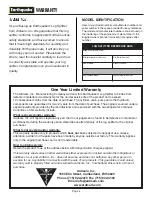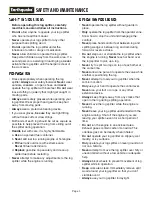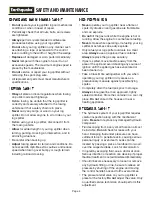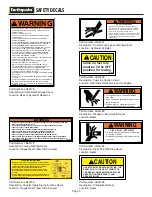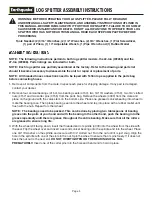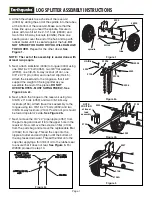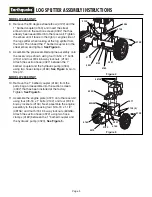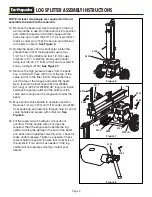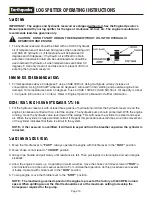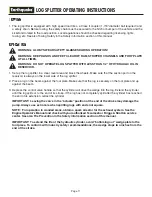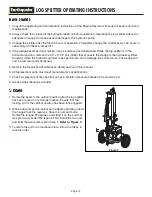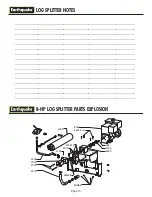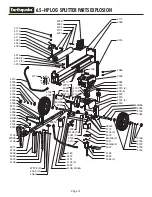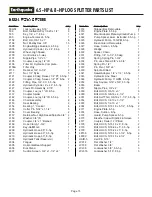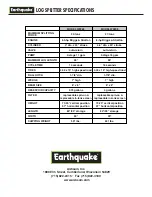
Page 11
LOG SPLITTER OPERATING INSTRUCTIONS
TOWING
1. The log splitter is equipped with high speed road tires, a Class II coupler (1-7/8” diameter ball required) and
a safety chain. Before towing, the safety chain must be secured to the hitch or bumper of the vehicle and the
kickstand rotated to the road position. Local regulations should be checked regarding licensing, lights,
towing, etc. See also Towing Safety in the Safety information section of this manual.
OPERATION
WARNING: ALWAYS WEAR SAFETY GLASSES DURING OPERATION!
WARNING: KEEP HANDS AND FEET CLEAR OF RAM, STRIPPER CHANNELS AND FOOT PLATE
AT ALL TIMES.
WARNING: DO NOT OPERATE LOG SPLITTER WITH LESS THAN 1/2” OF HYDRAULIC OIL IN
RESERVOIR.
1. Set up the log splitter in a clear, level area and block the wheels. Make sure that the suction port on the
reservoir is always on the lower side of the log splitter.
2. Place a log on the beam against the foot plate. Make sure that the log is securely on the foot plate and up
against the beam.
3. Depress the control valve handle so that the cylinder will drive the wedge into the log. Extend the cylinder
until the log splits or to the end of its stroke. If the log has not completely split after the cylinder has reached
the end of its extension, retract the cylinder.
IMPORTANT: Leaving the valve in the “actuate” position at the end of the stroke may damage the
pump. Always use extra care when splitting logs with ends not square.
NOTE: For operation in wooded areas, obtain a spark arrestor for the exhaust system. See the
Engine Operator’s Manual and check with your authorized Tecumseh or Briggs & Stratton service
center. See also Fire Prevention in the Safety information section of this manual.
IMPORTANT: To extend the life of the hydraulic cylinder, avoid “bottoming out” wedge plate to the
foot piece. To conform with industry safety recommendations, the wedge stops two inches from the
end of the stroke.


